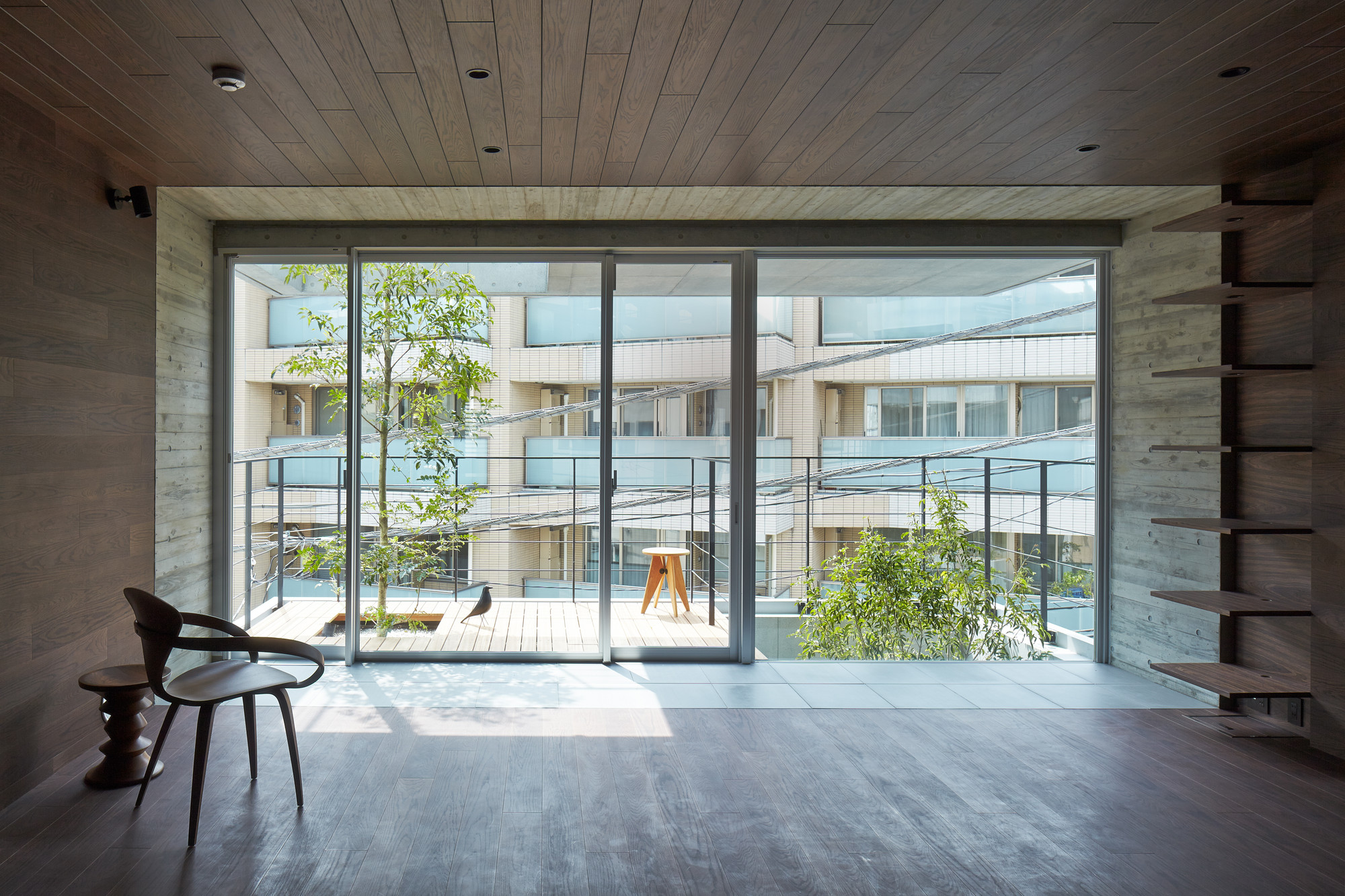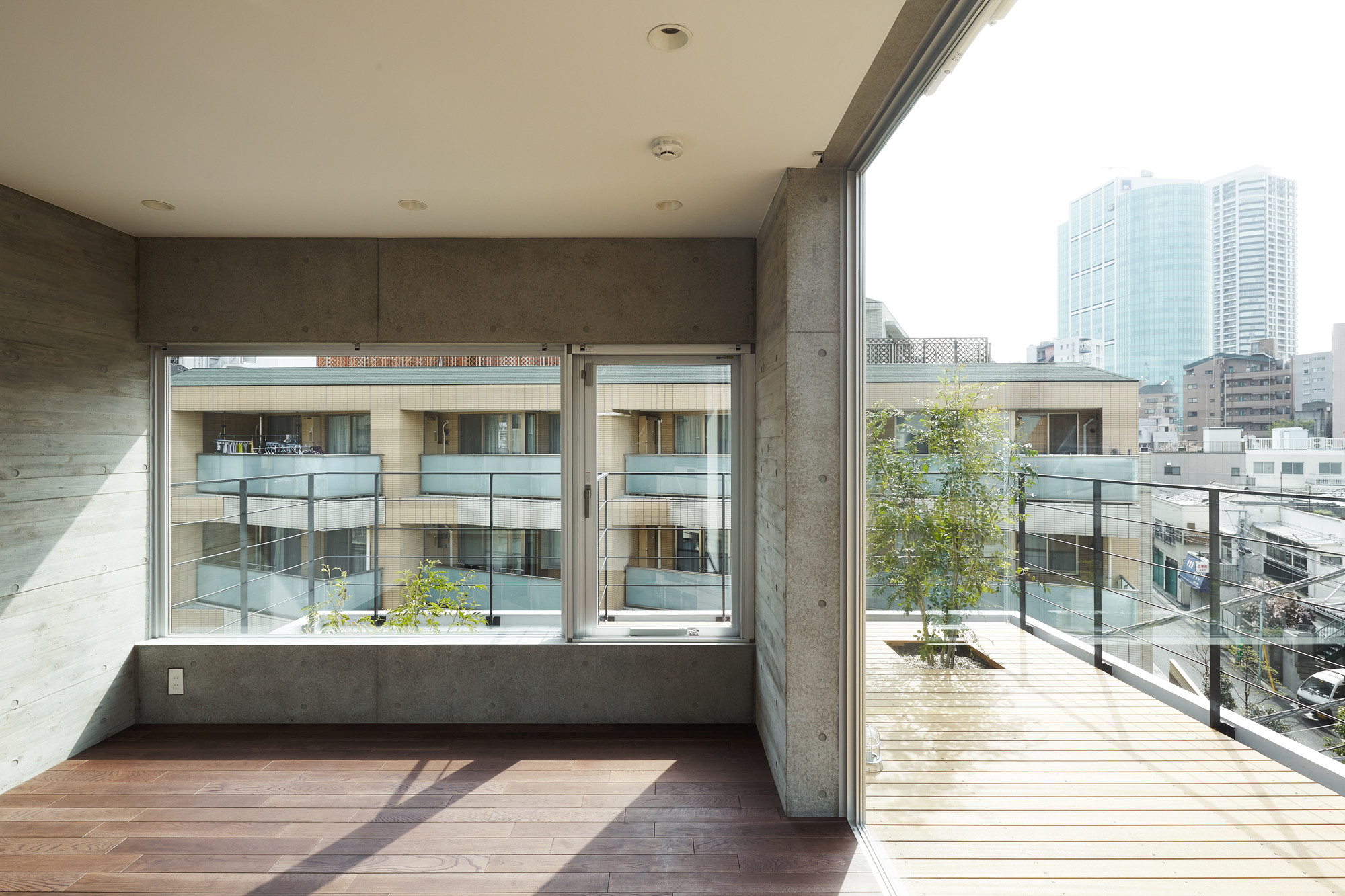Urban Balcony House in Tokyo

Would you sacrifice privacy to have your very own expansive outdoor spaces in the middle of a busy city? Compared to the more conventional, enclosed buildings around it, this urban concrete dwelling is open to the world, with much of its square footage devoted to open-air spaces where residents can soak up the sun and enjoy the fresh air.
‘Balcony House’ by Ryo Matsui Architects is located in the middle of bustling Tokyo, yet it has the kind of private outdoor space typically only seen in the suburbs. Three verandas jut out over the sidewalk, and the entire roof is a terrace affording nearly panoramic views of the city.
Wooden decking brings some warmth to the angular concrete structure, and thin black metal railings avoid blocking views and let in as much light as possible. The terraces are planted with small trees, in a city where greenery can be hard to come by.
A two-car garage on the ground level leads up to the living spaces, which are lined in a variety of species and tones of wood for a dynamic feel. The master bedroom is on the fourth level, elevated above most of the surrounding buildings for optimal views.
“In Japan, especially the centre of Tokyo, the house next to each other extremely approaches the site boundary. Although it is the place where we want to expect the openness to the frontal road necessarily, the site facing each other is the same condition. There are small balconies, and the planters for blindfolds. It is not exaggeration even if it is said that balconies influence the cityscape in the crowd place of the residential area. The balcony with the depth of 2m becomes the buffer area with the road and takes the function of eaves. ”
“Getting plants grown wild by keeping enough depth of the balconies, it is higher than an upper balcony and brought it up. We suggest that the balconies have a beneficent influence to not only the interior, and it enable to become the new cityscape.”








